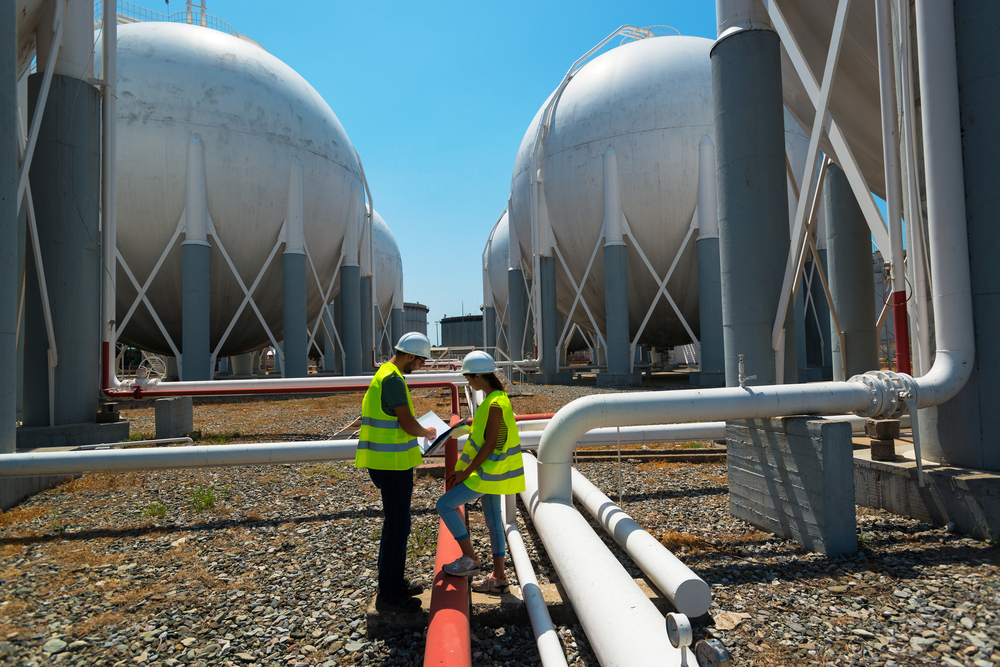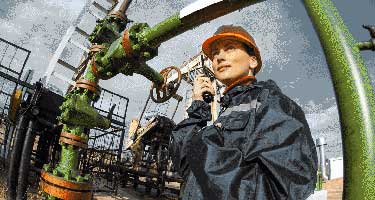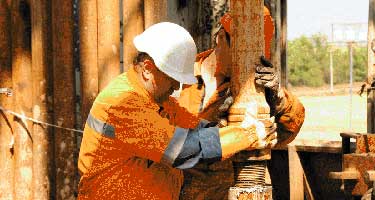4 Hidden Dangers in Oil and Gas Extraction

Here are four hidden dangers in oil and gas extraction to put on the radar of your oil companies, and some ways that you can harness the power of mobile technology to identify risk, measure exposure, and keep your workers safe from harm.
1. Drilling Fluids
During oil drilling, fluids are circulated through the well and through systems that can be open, partially enclosed, or fully enclosed.
It’s well known that these fluids, when released into the environment, can cause groundwater contamination — so most companies have strict controls in place to prevent leaks. But these fluids, which often have trace amounts of hydrocarbons in them, can also cause health and safety issues among your workers.
Health effects from exposure to drilling fluids include dizziness, headaches, drowsiness, nausea, inflammation of the respiratory system, and even an increased risk of cancer.
Employees can be exposed while working in a shale shaker room, when over or around a fluids pit system, while on the drill floor, and more. But one of the most common ways workers are exposed to chemicals in drilling fluids is through contaminated and/or inappropriate protective gear. For example, fabric gloves that get soaked with hydrocarbons expose an employee to more contaminants than if he or she had not worn any gloves at all and had been splashed with fluid and wiped it off.
To keep workers safe from hazardous exposures, it’s important for oil companies to establish clear safety protocols for the handling of drilling and fracking fluids and to provide training for all members of the team. Then, use mobile forms to create and maintain safety checklists that your team members can use on a daily basis. Scrupulous use of such checklists will enable you to identify — and address — hazardous exposures before they lead to harm.
2. Silica
Inhaling silica dust can cause silicosis, a lung disease that causes shortness of breath, severe coughing, weakness, and possibly cancer or death.
OSHA and the National Institute for Occupational Safety and Health (NIOSH) have identified seven sources of silica dust exposure during hydraulic fracking:
- Dust ejected from thief hatches (access ports) on top of the sand movers during refilling operations while the machines are running (hot loading)
- Dust ejected and pulsed through open side fill ports on the sand movers during refilling operations
- Dust generated by on-site vehicle traffic
- Dust released from the transfer belt under the sand movers
- Dust created as sand drops into, or is agitated in, the blender hopper and on transfer belts
- Dust released from operations of transfer belts between the sand mover and the blender
- Dust released from the top of the end of the sand transfer belt (dragon’s tail) on sand movers
You can take steps to control dust exposure by improving existing engineering controls and safe work practices. In addition, it’s required by law that you monitor the air to determine your workers’ exposure to silica, provide respiratory protection as needed, and offer training and information about the hazards of silica and other chemicals. For more information, see NIOSH’s “A Guide to Working Safely With Silica.”
3. NORM (naturally occurring radioactive materials)
The earth naturally contains small amounts of radioactive materials. Normally these concentrations are low and relatively harmless, but oil drilling activities can reveal or create higher concentrations. OSHA says that oil field production waters have high concentrations of radium, and that the scale inside pipes and tanks is where that radium builds up. Workers who handle pipes or work in gas processing facilities are at risk of NORM exposure. Water handling equipment has also been shown to have the highest levels of NORM contamination. While the radiation levels of even concentrated NORMs are fairly low, chronic exposure can cause cancer.
Because NORM exposure tends to be chronic, medical testing alone is not effective for protecting your workers. “Therefore, while medical surveillance is a standard strategy that is often used, it must be emphasized that source control, exposure monitoring, worker education and safe operating practices are the most important strategies for preventing significant worker exposures,” according to the International Association of Oil & Gas Producers.
4. Diesel exhaust
Exhaust fumes aren’t unique to the oil and gas energy industry, but they are a hazard anywhere heavy equipment or diesel generators are used. Short-term exposure to exhaust can cause eye, nose, and throat irritation. Long-term issues include cardiovascular problems and cancer.
Engineering controls are the best strategy to control exposure to exhaust. Use low-sulfur fuels and, if possible, restrict the amount of diesel-powered equipment in a work area. Also, regular maintenance of your equipment will prevent it from running too rich, which can result in excessive emissions.
Tapping technology to stay on top of hidden hazards
By tapping into technology — especially mobile forms — to provide your workers with everything from equipment inspections and hazardous substance self-inspections to safety checklists and more, you can keep your employees safe from these hidden hazards and oil and gas extraction dangers.
In many cases, OSHA or other energy regulation organizations have published energy standards relating to exposure levels of these hazards. So knowing the legal limits is a first step. Use these published energy guidelines (and other sources referenced here) to create training guides and mobile safety checklists that your workers can take right into the field with them. And consider using a mobile PPE checklist — a good practice no matter what hazards you are trying to mitigate.
You can also tap into the power of mobile forms to keep detailed records of samples taken to monitor air quality — vital information to have whether you are monitoring concentrations of diesel emissions or checking levels of airborne silica.
To see how GoCanvas can help you harness the power of mobile form to identify, monitor, and prevent hazardous exposure on your site and drilling rig, give GoCanvas a try today and download a free app from our Mining, Quarrying, Oil, Gas & Chemicals Application Store!

Stay in Touch!
About GoCanvas
GoCanvas® is on a mission to simplify inspections and maximize compliance. Our intuitive platform takes care of the administrative tasks, freeing our customers to focus on what truly matters – safeguarding their people, protecting their equipment, and delivering exceptional quality to their customers.
Since 2008, thousands of companies have chosen GoCanvas as their go-to partner for seamless field operations.

Check out even more resources

Manage Risk for Oil and Gas Companies With a Risk Assessment Checklist
Today, the challenges faced by the oil and gas industry are considerable. Effective business leaders and managers must thoroughly understand them to determine…

Solutions to Waste Management Issues For Oil & Gas Companies
Waste management compliance is important in every industry. The oil and gas industry, in particular, has a strong risk of waste emissions…

4 Ways Big Data is Transforming Oil and Gas
Oil and gas companies are getting smart about using the data they collect to gain insights and manage people, equipment, and worksites more effectively…